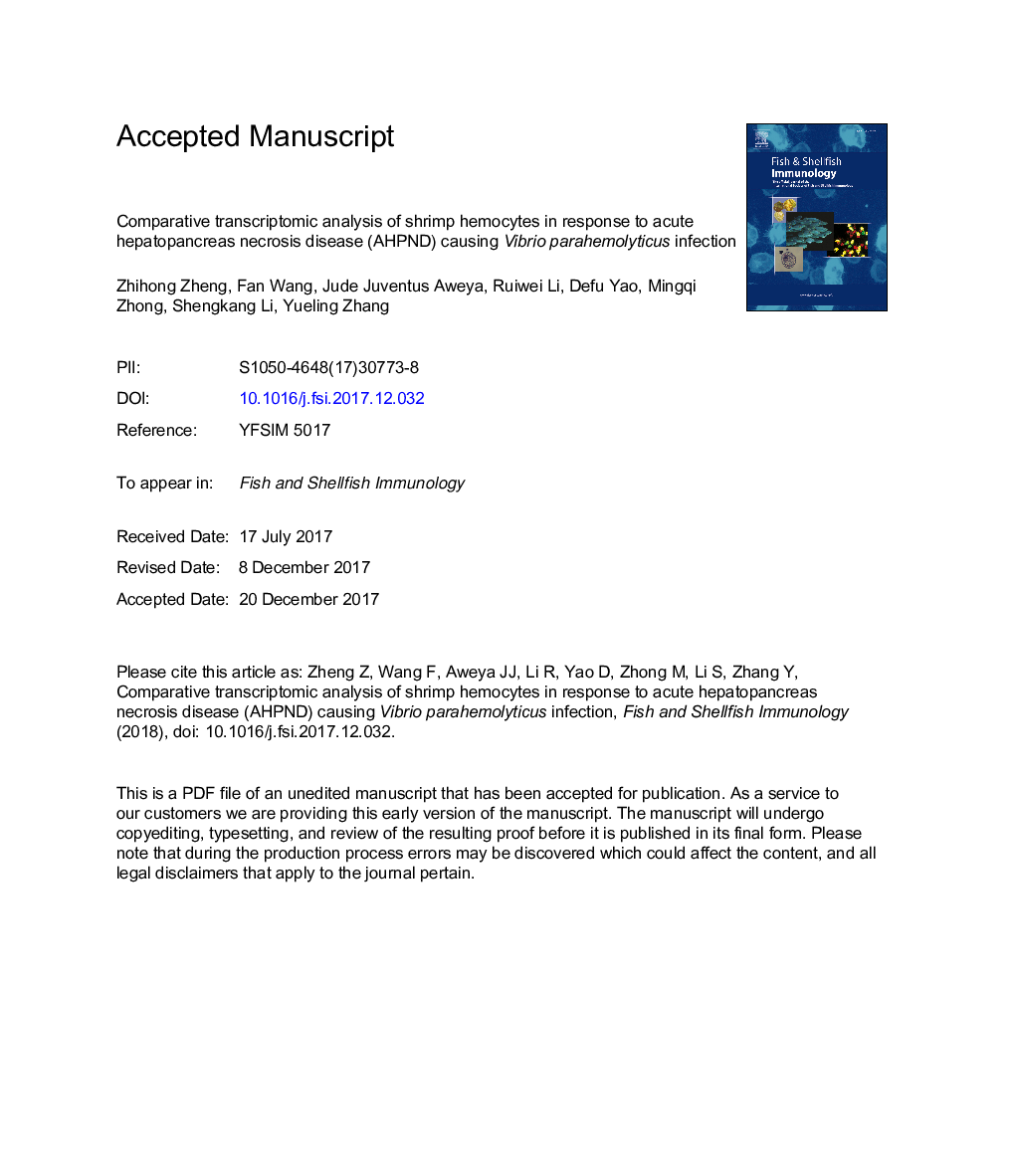| Article ID | Journal | Published Year | Pages | File Type |
|---|---|---|---|---|
| 8498647 | Fish & Shellfish Immunology | 2018 | 32 Pages |
Abstract
The recent emergence of acute hepatopancreas necrosis disease (AHPND) in shrimps has posed a major challenge in the shrimp aquaculture industry. The Pir toxin proteins carried by some strains of Vibrio parahaemolyticus are believed to play essential roles in the pathogenesis of AHPND. However, few studies have so far explored how the host immune system responds to these bacteria. In this study, AHPND V. parahaemolyticus (with Pir) and non-AHPND V. parahaemolyticus (without Pir) were injected into two groups of shrimps, and the hemocytes collected for comparative transcriptomic analyses. A total of 1064 differentially expressed genes (DEGs) were identified, of which 910 were up-regulated and 154 were down-regulated. Gene Ontology (GO) annotation and Kyoto Encyclopedia of Genes and Genomes (KEGG) pathway analysis showed that many DEGs were involved in a number of biological processes such as cellular process, metabolic process and single-organism process in the AHPND V. parahaemolyticus injected group than the non-AHPND V. parahaemolyticus injected group. Among these, major metabolic processes such as carbohydrate metabolism, lipid metabolism and amino acid metabolism were further identified as the major responsive gene groups. We observed that genes involved in cell growth and anti-apoptosis including src, iap2, cas2, cytochrome P450, gst and cytochromecoxidase were strongly activated in the AHPND V. parahaemolyticus group than in the non-AHPND V. parahaemolyticus group. Collectively, our results unveiled that shrimp hemocytes respond to AHPND related strain of Vibrio parahaemolyticus infection at the transcriptional level, which is useful in furthering our understanding of AHPND.
Related Topics
Life Sciences
Agricultural and Biological Sciences
Aquatic Science
Authors
Zhihong Zheng, Fan Wang, Jude Juventus Aweya, Ruiwei Li, Defu Yao, Mingqi Zhong, Shengkang Li, Yueling Zhang,
